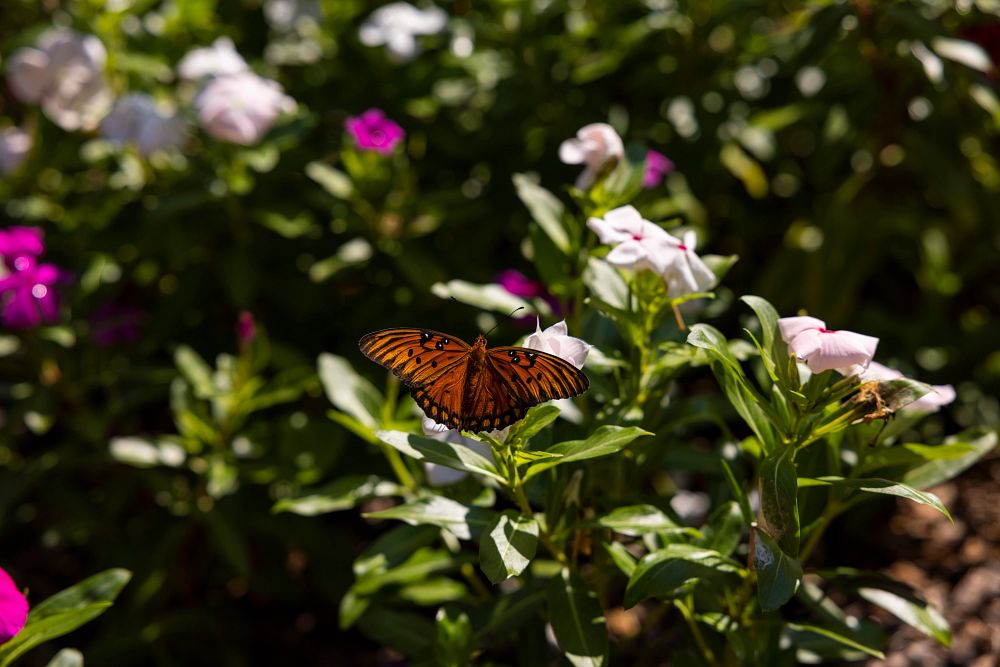To help keep diseases out of your winter annual flowerbeds, University of Georgia plant pathologist Jean Williams-Woodward recommends starting with disease-resistant plants.
“Selecting powdery mildew resistant cultivars of crape myrtles is easy. Just buy the ones with the Indian names,” said Williams-Woodward, a scientist with the UGA College of Agricultural and Environmental Sciences. These include the white flowering, 'Natchez' and the lavender flowering 'Muskogee.' Selecting disease resistant flowering annuals takes a little more thought.
Pick the right varieties
When adding pansies to your winter landscape, she recommends selecting from this list of leaf spot resistant varieties: ‘Bingo Red & Yellow,’ ‘Crown Blue,’ ‘Crown Golden,’ ‘Crystal Bowl Supreme Yellow,’ ‘Crystal Bowl True Blue,’ ‘Dynamite Red & Yellow,’ ‘Majestic Giants Yellow’ and ‘Viola Sorbet Blackberry Cream.’
“Leaf spot resistance doesn’t mean they are totally immune to disease,” she said. “It means they get less disease than a susceptible variety.”
If Patiola pansies are your flower of choice, Williams-Woodard recommends buying Purple Passion Mix, Pure Yellow, Pure Lemon and Pure Orange. These varieties are all less susceptible to Cercospora leaf spot than the Colossus series cultivars, she said.
Remove infected plants
This season Williams-Woodward expects to see snapdragons and pansies with downy mildew. This disease likes wet, humid and cooler weather.
“The best control method is to remove the downy mildew infected plants because it spreads very fast,” she said. “You can send the plants to me because I personally love mildews. Once it spreads in your flowerbed, you won’t be able to control it.”
Impatiens, another Georgia landscape favorite, is often infected by downy mildew. Williams-Woodward says home landscapers who saw the disease on their impatiens last year, will see it again if they plant in the same spot.
“It can be hard to spot the symptoms – rapid defoliation, subtle leaf discoloration, downward cupping of leaves and white sporulation on the leaf underside – but eventually your impatiens will look like bare stems or twigs,” she said.
You get what you pay for
Root rot disease is also a major problem in winter landscape beds. Georgia has had a fairly wet winter, which will make conditions ideal for root rot disease.
“If you buy cheap plants from the ‘almost dead rack’ you are buying and bringing home problems,” Williams-Woodward said.
To help prevent root rot diseases, she recommends installing plants at a higher elevation, not planting too deeply, improving soil drainage and redirecting water so plants are not overwatered. “And try not to till in old plants and plant materials,” she said. “If you had disease there before you are just incorporating that material back into the area.”
Root rot diseases thrive in moisture, so inspect plant beds and make sure there are no sources of extra water, such as a downspout aimed into the bed or an irrigation pattern that directly hits the area.
Numerous cases of black root rot (Thielaviopsis basicola) are being reported. It produces black spores in chains that survive in soil. In large numbers they cause the roots to look black, thus the name.
“We are seeing a lot of it this year but some years we don’t. It favors cooler temperatures and alkaline soils, so keeping the pH below 5.8 will reduce it,” she said.
Avoiding susceptible plants will also help fight black root rot. Susceptible plants include vincas, pansies/violas, snapdragons, impatiens, petunias, calibrachoas, verbenas and begonias. Less susceptible plants are salvias, geraniums, marigolds, zinnias, dusty millers, coleuses and celosias.
“I haven’t met a calibrachoa yet that isn’t susceptible to black root rot,” she said.
Follow these tips
Overall, to help reduce the amount of disease growing in your landscape flowerbeds, Williams-Woodward recommends following these tips:
- Follow good sanitation practices.
- Propagate from clean stock.
- Plant the correct plant in the correct location.
- Manage and modify the environment. (But don’t over water.)
- Use resistant cultivars.
- Eliminate disease-prone plants.
- Use, but don’t rely on, chemical control.
- Keep your tools clean.
“Keeping track of what diseases you have in your beds now will help you plan for your landscape in the future,” she said.







